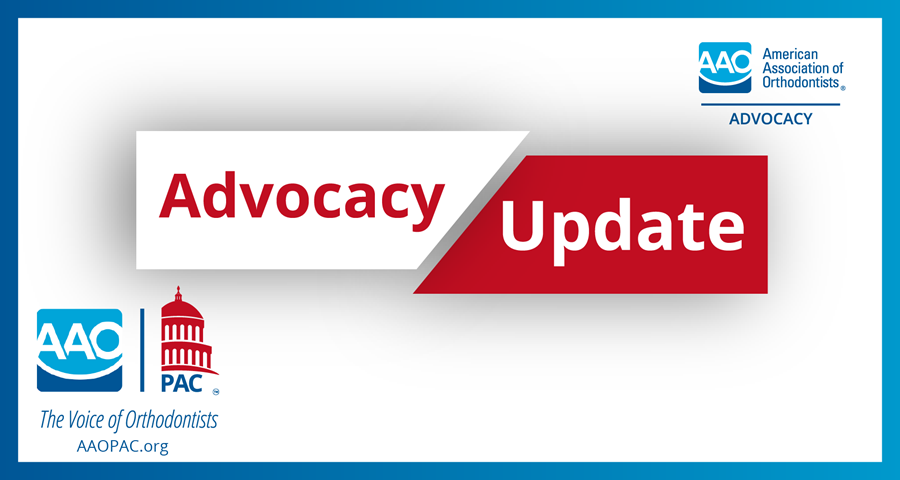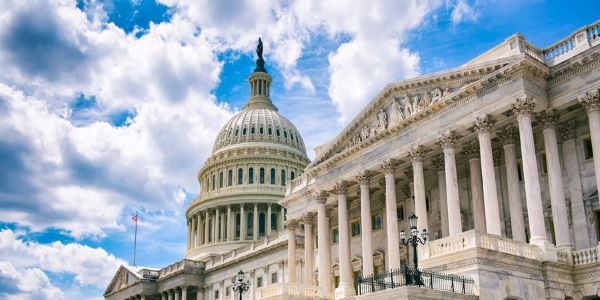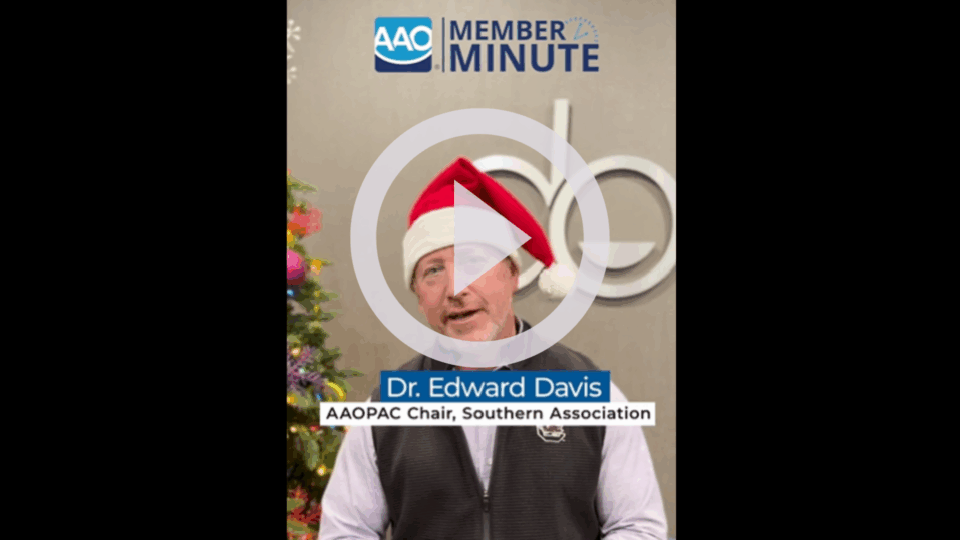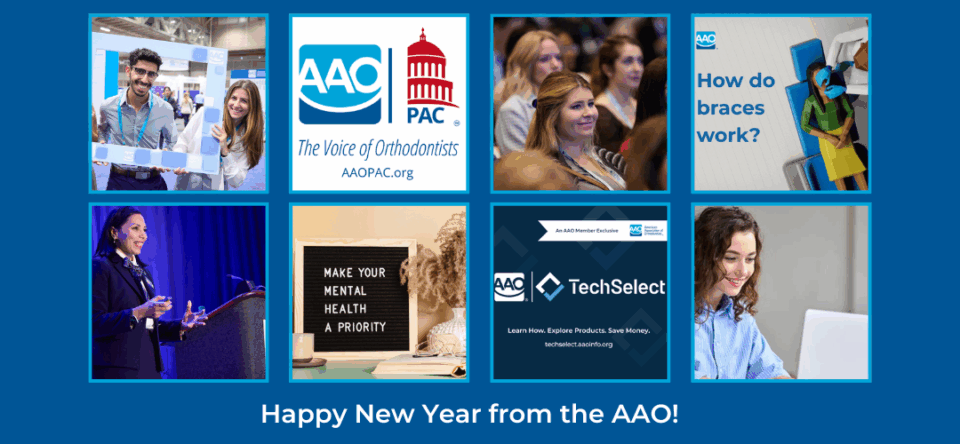On July 4, 2025, President Trump signed into law H.R. 1, also known as the “One Big Beautiful Bill Act” (OBBBA). The AAO has been extremely active advocating for AAO member priorities related to OBBBA.
Last month, the eBulletin provided an in-depth look at the budget reconciliation process in Congress via the OBBBA and its potential for impact on AAO members and their patients. Enclosed with this update, you will find a summary of the highlighted provisions in the final bill that are important for AAO members–as health care providers and small business owners.
The AAO Advocacy team worked closely with our federal lobbying team in Washington, D.C. (Cozen O’Connor Public Strategies), the Organized Dentistry Coalition (ODC), and other coalition partners to advocate for AAO priorities in the OBBBA. The OBBBA is a complicated and comprehensive piece of legislation that spans over 900 pages. It encompasses a wide range of provisions, including tax reforms, defense spending increases, and changes to healthcare and social programs.
The AAO Advocacy team continues to take an evidence-based approach to analyzing the bill outcomes for AAO members, their teams, and patients to identify both favorable components and elements we oppose or may not fully support.
As always, our goal is to make sure AAO is “at the table” as we actively engage with elected officials and key stakeholders to communicate the impact of legislation and advocate for the orthodontic specialty and AAO members’ patients.
With such a large bill swiftly passed, there is a lot for stakeholders to unpack, and the AAO Advocacy team along with Cozen O’Connor Public Strategies is working on that. Regarding the tax provisions passed as part of this budget reconciliation process, we encourage members to speak with their financial and tax advisors to understand how these provisions will affect their personal and practice-level planning in the years ahead.
Tax Rate, R&D expenditures, and Pass-Through Entity Tax (PTET) and SALT Deduction Updates and Extension of Current Tax Rates
This provision appears in the final bill as Sec. 70101. It makes permanent the modified income tax brackets from the Tax Cuts and Jobs Act. The provision also adds an additional year of inflation adjustment to all brackets except the top bracket (37 percent).
The AAO worked extremely hard on these tax issues in OBBBA, advocating for AAO members as small business owners. There were versions of this bill that would have created tax hikes on small business owners, orthodontists included. Working directly with our key contacts on Capitol Hill and with a wider coalition, we were able to advocate for keeping PTET current law and supporting economic growth through small business success. Over 500 AAO members took action on our grassroots action alerts on the PTET issue, and those voices helped make all the difference advocating for the final tax results in the OBBBA law.
Domestic R&D Expenditures Deduction
Included in the final bill under Sec. 70302, this deduction allows permanent immediate expense of domestic R&D expenditures, with retroactivity for small businesses. The legislation permanently allows taxpayers to immediately deduct domestic research or experimental expenditures paid or incurred in taxable years beginning after December 31, 2024.
Small business taxpayers with average annual gross receipts of $31 million or less will generally be permitted to apply this change retroactively to taxable years beginning after December 31, 2021.
While the final bill omits a proposed restriction on PTET deductibility, it significantly reforms the SALT deduction structure:
- Graduated Cap: The flat $10,000 SALT deduction cap is replaced with a graduated system—starting at $40,000 for 2025, gradually phasing down to $10,000 by 2030.
- Implications for PTET Filers: Although not directly targeting PTET, this change may affect the value of SALT workaround regimes in states where PTET is used. Orthodontists who file as pass-through entities should consult their tax professionals about optimizing their deductions under the new rules.
- Pease-like Limitation Returns: A limitation on itemized deductions for high-income taxpayers is reinstated but does not apply to the Qualified Business Income (QBI) deduction under Section 199A, preserving a vital tax benefit for many orthodontic practices.
Student Loan Reforms: New Borrowing Caps and Repayment Framework
The Act overhauls the federal student loan system, which will impact who is interested in pursuing the orthodontic profession, current dental students considering the orthodontic specialty, current orthodontic residents, and members supporting children in professional education.
- Graduate PLUS Elimination and Parent PLUS Loan Cap: As of July 1, 2026, graduate and professional students will no longer be eligible for PLUS loans. Additionally, Parent PLUS loans are capped at $20,000 per year and $65,000 total per dependent student, without regard to any amounts repaid, forgiven, canceled, or discharged. In addition to these caps, the law sets a lifetime borrowing limit of $257,500 for all student borrowers, excluding Parent PLUS loans.
- New Borrowing Limits:
- Up to $50,000 annually and $200,000 lifetime for professional degree programs.
- Total lifetime federal loan borrowing cap (including undergraduate) limited to $257,500 per student.
The AAO is deeply concerned about this provision and the negative impact it could have on those considering the orthodontic profession, which will ultimately lead to decreased access to quality care. The average orthodontist graduates with over $567,000 in student loan debt. Interest continues to accrue while in residency, despite a typical orthodontic resident’s lack of ability to earn an income while in residency.
Earlier provisions of the bill included elements of the REDI Act that would have deferred interest for 4 years while in residency. Unfortunately, this provision was not included in the final bill despite advocacy from the Organized Dentistry Coalition (including the AAO), medical associations, and other medical and dental professionals advocating for this common-sense provision.
Last weekend, AAO Vice President of Advocacy Nathan Mick and Alex Campau of Cozen O’Connor met with over 15 Members of Congress and directly discussed AAO concerns with the challenges these new federal student loan changes will create for the specialty by creating more barriers to entry and additional reliance on varied private lending to become orthodontists.
Part of the potential play Congress is making here with federal student loan debt caps is to mount pressure on colleges and universities to control tuition inflation. The AAO will continue to share with Members of Congress the realities of the student loan debt challenges orthodontists and future orthodontists face and its impacts on serving patients, especially in rural and urban medically underserved areas of the country.
Nathan Mick noted, “The AAO is actively engaging with lawmakers at both the federal and state levels to pursue meaningful solutions to the student loan debt challenges facing AAO members. Through our strong collaboration with the Organized Dentistry Coalition and a broader alliance of affected stakeholders, we are working hard to communicate and address the significant impacts of the OBBBA on student debt.
“Mobilizing AAO member voices will remain vital to our advocacy efforts. While there is plenty of work ahead, addressing student debt continues to be a long-standing priority for AAO,” Mr. Mick continued. “The strategic influence, relationships, and advocacy power the AAO brings to the table have never been more important. In fact, the student loan debt setbacks introduced in the OBBBA can help galvanize our voice and offer a renewed opportunity to amplify our message to Congress. The AAO remains well-positioned on Capitol Hill with a strong and effective advocacy voice for AAO members, and we will continue working relentlessly to advance our evidence-based priorities.”
To support members facing debt challenges, the AAO launched a dynamic student debt microsite last spring, featuring federal and state resources as well as information on debt relief programs where orthodontists are specifically eligible.
At the state level this year, AAO helped secure $6 million in the Florida state budget recently signed by Governor Ron DeSantis. This funding will reimburse up to $250,000 in student loan debt for orthodontists who meet specific requirements in medically underserved areas. Details on this Florida initiative, along with updates related to the OBBBA, will continue to be posted on the AAO student loan debt microsite.
Additional OBBBA student loan provisions that may be beneficial include:
- New Repayment Options:
- Two plans: a standard 10–25-year fixed repayment, and a new income-based Repayment Assistance Plan (RAP) with forgiveness after 30 years.
- Unpaid interest under RAP will not capitalize, helping prevent runaway balances.
- Employer-Paid Loan Assistance Made Permanent: The federal tax exclusion for up to $5,250 in employer-paid student loan assistance per year is now permanent, with inflation indexing starting in 2026. In the fall of 2024, the AAO held a continuing education (CE) webinar on the previous Employer Student Loan Repayment Plan legislation that was included in the 2020 CARES Act 2.0. This webinar is still relevant and available for CE credit here.]
To go deeper and read the full Cozen O’Connor Public Strategies report on the OBBBA prepared for AAO, please click here.
Also available is an expanded version of this summary article, with sections addressing aspects of the OBBBA such as health-related tax credits, including Dependent Care Assistance Programs (DCAPs) and Health Savings Accounts (HSAs); Medicaid and Medicare direct and indirect cuts; and business benefits including changes to expensing rules and an Employer Child Care Tax Credit.
More updates and related grassroots advocacy alerts will be provided by the AAO Advocacy team as we continue to unpack the OBBBA and more fully understand its impact on AAO members.
Your Help is Needed Now More Than Ever Through AAOPAC
The AAO is deeply committed to patient health and safety through orthodontic care provided by qualified specialists. Our mission – to advance the art and science of orthodontics through education, advocacy, and research — has never been more important.
AAO’s new fiscal year began June 1 and helps to build our important relationships on Capitol Hill related to AAO priorities. You can make your AAOPAC contribution for fiscal year 2025-2026 now! The bipartisan AAOPAC helps fuel our advocacy success in Washington, DC and in states throughout the country. Contributions can be made online via credit card at AAOPAC.org. It only takes a few minutes to complete your contribution, using your e-mail address associated with your AAO membership. You can also view your giving history and profile.
Our AAOPAC Pillars of Giving help build our success, and the AAO’s bipartisan advocacy influence continues to grow through member grassroots engagement. Your grassroots voice and AAOPAC support make all the difference!



